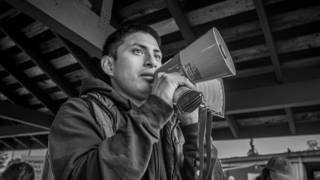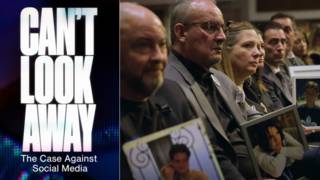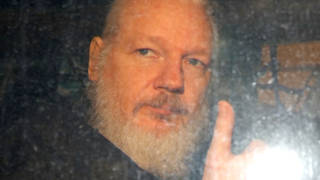
Topics
CNN is reporting the Pentagon is moving ahead with plans to allow more than 500 news reporters and photographers to accompany U.S. troops as they prepare to invade Iraq.
By the end of this week, more than 200 news organizations have to notify the Pentagon whether they will accept invitations to QUOTE “embed” with U.S. troops.
The Pentagon’s move follows criticism that U.S. reporters were denied access to cover the war in Afghanistan.
But CNN is not reporting on the specific terms of the deal. Specifically, CNN is making no mention of whether the military will censor the journalists’ reports. The conservative Weekly Standard admits QUOTE: “there will be some censorship for sure.”
The Pentagon has all but admitted its new attitude towards the press is part of an aggressive strategy to deploy the media as part of a public relations campaign. According to the Weekly Standard, the military wants positive stories about the grit and resolve of its troops.
Well today on Democracy Now! we go back in time, to the last Gulf War with the last Bush administration. Then, news reports were subjected to a military censor, and reporters were forced to do their job while being accompanied by a Pentagon public relations officer.
On August 2, 1990, Iraq invaded Kuwait. The first Bush administration deployed various propaganda tactics to build congressional and United Nations support for war.
In an audio-visual presentation at the United Nations Security Council, the Bush administration charged that Iraqi soldiers in occupied-Kuwait had pulled babies from incubators in Kuwaiti hospitals, and stolen the incubators. The false propaganda wasn’t completely refuted until well after the Gulf War ended.
In another tactic, the Pentagon claimed there was a massive Iraqi military buildup on the Saudi Arabian border, and that they had military satellite photos to prove it. But they refused to release the photos. The St. Petersburg Times published commercial satellite photos of the region from that time, and they showed no Iraqi troops along the Kuwait-Saudi Arabia border.
The tactics worked. Congress and the U.N. Security Council both backed the war. More than six hundred thousand US soldiers were deployed, some ninety thousand tons of bombs were dropped and more than 200,000 Iraqis were killed.
“The Hidden Wars of Desert Storm” is a documentary by filmmakers Audrey Brohy and Gerard Ungerman. It tells the real story behind that war. It traces the illegal arming of Iraq by the US government. It traces the US use of depleted uranium, which many believe caused the sickening of hundreds of thousands of Iraqis and US soldiers. It questions the Pentagon’s propaganda. And it suggests the US government may have been more interested in Iraq’s oil reserves the second largest in the world than ridding the world of an evil dictator. One US official described the oil fields as “too important to be left to Arabs.”
“Hidden Wars of Desert Storm” is the culmination of a two-year investigation by the filmmakers. It answers questions about the Persian Gulf War using documents never before seen on television and backed by interviews with Desert-Storm Commander General Norman Schwarzkopf, former Attorney General Ramsey Clark, former UN Iraq Program Director Dennis Halliday, former chief UN weapons inspector Scott Ritter and many others.
Tape:
- “Hidden Wars of Desert Storm,” directed by Gerard Ungerman and Audrey Brohy, and narrated by John Hurt.
Related link:










Media Options